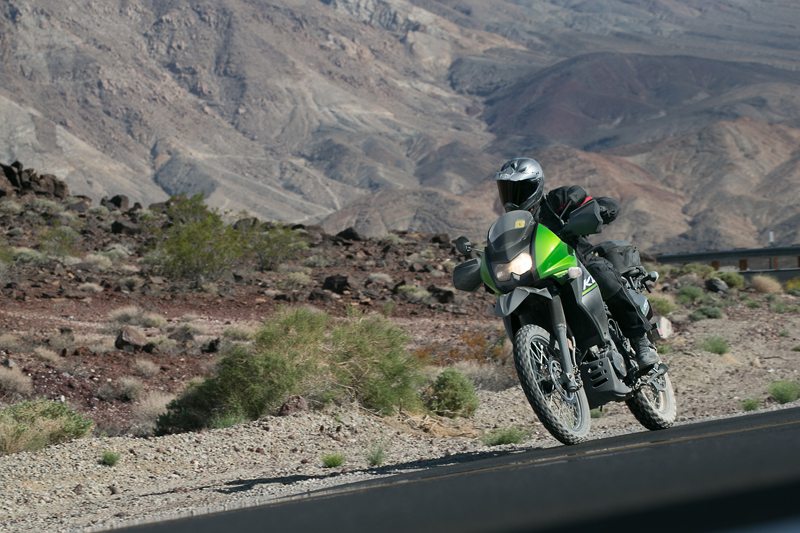
Kawasaki’s KLR650 has secured a place of honor in the pantheon of great motorcycles. Not because it’s the fastest or the most stylish or the most sophisticated in its class. In fact, it’s none of those things, though it does offer the best value. The KLR650 has built a peerless reputation as a versatile workhorse, as a bike whose stone-simple design imbues it with legendary reliability, making it the middleweight dual-sport of choice for ‘round-the-world travelers and daily commuters alike. No wonder it has been the top-selling 650cc dual-sport in the U.S. for years.
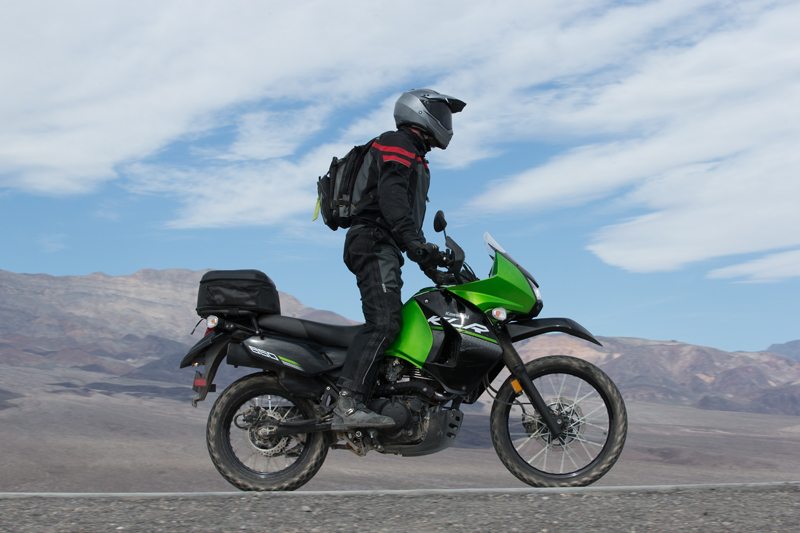
Since its debut in 1987, the KLR650 has undergone only one major update. For 2008, Kawasaki improved the engine, suspension, brakes, aerodynamics, seat and more, but the basic design remained the same. It’s still a liquid-cooled 651cc single with DOHC and 4 valves, and it still mixes fuel and air with a Keihin CVK40 carburetor. And it has always been a good deal, ranging in price from $2,999 in 1987 to $6,500 in 2014.
Although the KLR650 has been in Kawasaki’s 2014 lineup since last fall, months ahead of announcing its 2015 lineup Kawasaki added an updated version called the KLR650 New Edition. An extra $100 over the base model gets you stiffer suspension, a new seat and additional color options (Metallic Flat Raw Graystone/Ebony and Pearl Stardust White/Ebony in addition to the standard Candy Lime Green/Ebony, with new graphics). To give the New Edition a proper shakedown, Kawasaki organized a three-day dual-sport ride, close to 600 miles of pavement, dirt, sand and gravel between Las Vegas and Death Valley National Park.
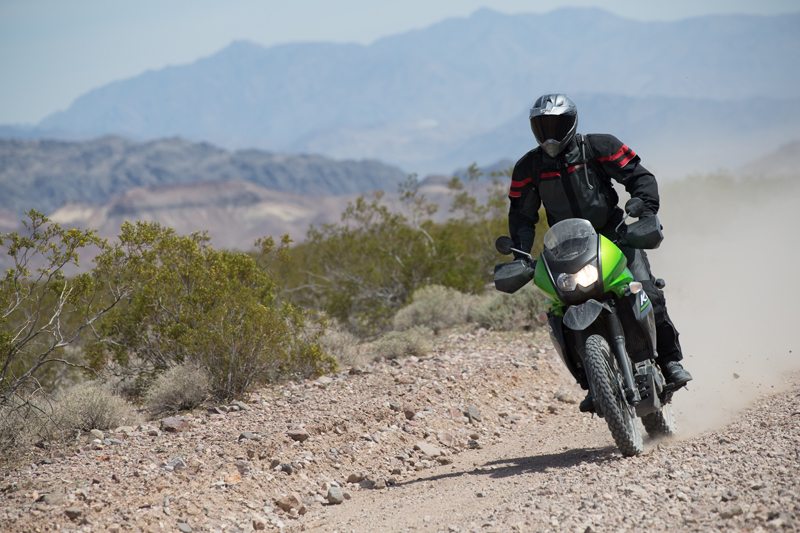
Having put thousands of on- and off-road miles on KLR650s, I can say without reservation that the upgraded suspension has transformed the bike. The fork, which has 41mm stanchions, 7.9 inches of travel and no adjustability, has 40-percent stiffer springs, 28-percent more rebound damping and 5mm-higher oil height, which makes the final portion of the stroke much more progressive to prevent bottoming. The rear shock, which has 7.3 inches of travel and is adjustable for spring preload and rebound, has a 63-percent stiffer spring rate and 83-percent more rebound damping. With heavily-armored dual-sport gear on my 200-pound body plus a backpack and tailbag stuffed with water, snacks, etc., I loaded the KLR with about 250 pounds. The stiffer suspension better supports heavy loads and improves the bike’s stability at speed and through fast corners, with much less wallowing, fork dive under braking and squat under acceleration. On a deserted stretch of desert highway I throttled up to nearly 100 mph without any hint of instability.
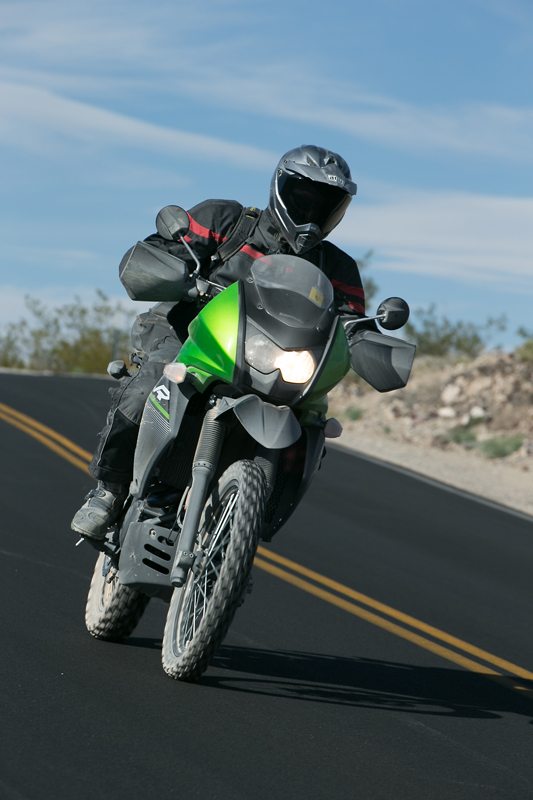
Off-road is where the new suspension really shines. We kept up a brisk pace on unpaved roads and dealt with constantly varying terrain, from a technical climb up a rocky jeep road to 7,700-foot Wheeler Pass to deep sand to miles and miles of beat-up dirt/gravel roads. The rear shock bottomed only once, when I crossed a ditch at speed, but the fork never hit the end of its stroke. Again, subjecting the softer-suspended KLR650 to 200-plus, fast-paced miles of rough terrain would have been a much less enjoyable experience. The only time softer suspension would have helped is the 30 miles of heavily washboarded gravel out to Death Valley’s Racetrack, a remote playa where rocks that tumble down the adjoining mountain mysteriously move across the ground, leaving long tracks in their wake.
That I didn’t really think about the New Edition’s seat over the course of three long days of riding speaks volumes about its improvement over the one on the base model. Although it still towers 35 inches above the pavement, the new seat is slimmer in front for an easier reach to the ground. From about the middle of the saddle to the back, it’s 1.2 inches wider and has a flatter shape. Also, the internal foam is more supportive and the cover material is new. What used to be a sore spot on the KLR650 is now perfectly fine in stock form.
Everything that makes the KLR650 a practical, enjoyable all-around motorcycle is still there—its 6.1-gallon fuel capacity, its good wind protection with a frame-mounted fairing and standard hand guards, and its standard skid plate and rear rack. Dual counterbalancers keep vibration in check and modest engine output contributes to good fuel economy (Jett Tuning’s dyno recorded 37 horsepower and 34 lb-ft of torque and we averaged 47.2 mpg during our last test, Rider, June 2012). No ABS, no engine modes, just a basic, solid, do-anything, go-anywhere motorcycle. And with the New Edition upgrades, it handles much better and is all-day comfortable. That’s $100 well spent.
Read our 2012 Kawasaki KLR650 vs BMW G 650 GS Sertão comparison review
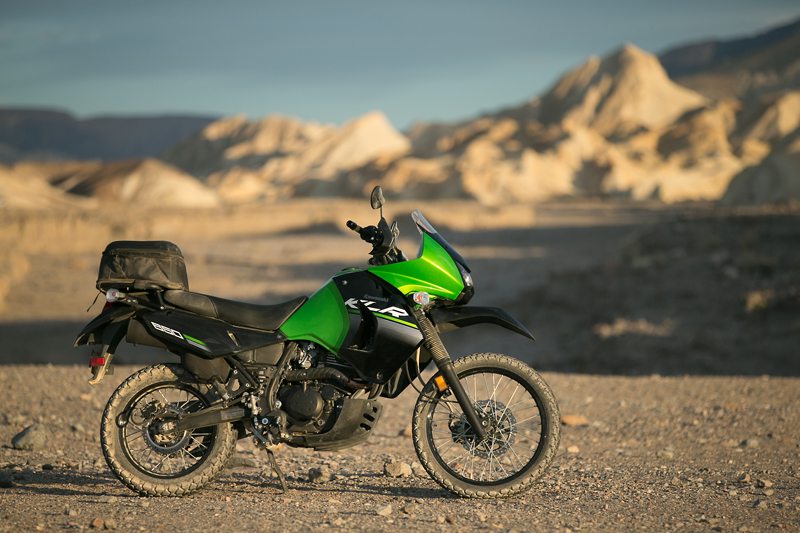
2014 Kawasaki KLR650 New Edition Specs
Base Price: $6,599
Website: kawasaki.com
Engine Type: Liquid-cooled single, DOHC, 4 valves
Displacement: 651cc
Bore x Stroke: 100.0 x 83.0mm
Transmission: 5-speed, cable-actuated wet clutch
Final Drive: 0-ring chain
Wheelbase: 58.3 in.
Rake/Trail: 28 degrees/4.4 in.
Seat Height: 35.0 in.
Claimed Wet Weight: 432 lbs.
Fuel Capacity: 6.1 gals., incl. 1.5-gal. reserve
MPG: NA
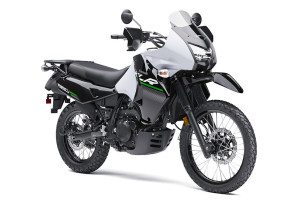 |
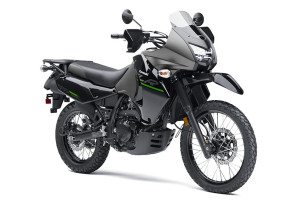 |








Do your happen to know if I can order the new seat for my 2009 KLR? Would be a huge upgrade!
I have a 2014 new edition and love it but not thrilled with the seat after less than 200 miles. I can’t compare the seat to the 09 but don’t think it would be much different than the one you have now. If your looking to change seats for comforts sake I would look to something different all together rather than a variant of what you already have. I have looked at seat concepts commuter seat and sargeant for my new edition. Check them out . Good luck and safe riding.
Yes you can
What has Kawasaki done about the dreaded balancer drive chain adjustment mechanism, the only weak spot in an otherwise stellar machine?
Get a Sargent seat,their better than what comes on the KLR.
I’m no sure “reliable” is the right term – maybe “more easily repairable”
I like the idea of the bike – I’m glad it exists but I wonder – at $6500.00 and no tech – if it really is a good value anymore.
Still staying with the 1st generation KLR. On my 2nd one , a 2000, I still have lots of fun using it and it does about all my age requires. But, if Kawasaki put FI on it, I just guess I would have to buy a Gen 3 even though heavier and more stuff to break when on the ground. Oh yes, Redesign the KLX engine with more compression and FI and make it the New 2015 KLR or they may wait till 2017 for a 30 year anniversary model. ?????????????
I’m on my second KLR. I’ve talked with two dealers about the doo-hickey, neither has EVER had a doo-hickey repair. I’ll take a chance.
Also, on the KLR, either a Bill Mayer or Randy Mayer seat is an all day seat. My butt knows what is talking about. Enjoy your KLR.
Great review of the trusty but improved KLR. I’m glad to hear about the increased seat comfort (not just hype). I also really like the color options and the stiffened suspension for us hefty guys. Most importantly it’s still a simple, affordable, and reliable dual sport bike.
Steve, another glaring weakness is the plastic bash plate. If you’re seeking real off-road adventure a nice aluminum alloy skid plate is a must, please don’t ask how I learned this. JNS Engineering makes a beautiful skid plate and I also recommend a good set of crash bars. They will pay for themselves on the first low speed tip over!
Mind if I ask what riding suit the gentleman in the pictures is wearing?
It’s the Olympia Moto Sports Renegade jacket and pants.
http://olympiamotosports.com/product/mens-renegade-jacket/
http://olympiamotosports.com/product/mens-renegade-pant/